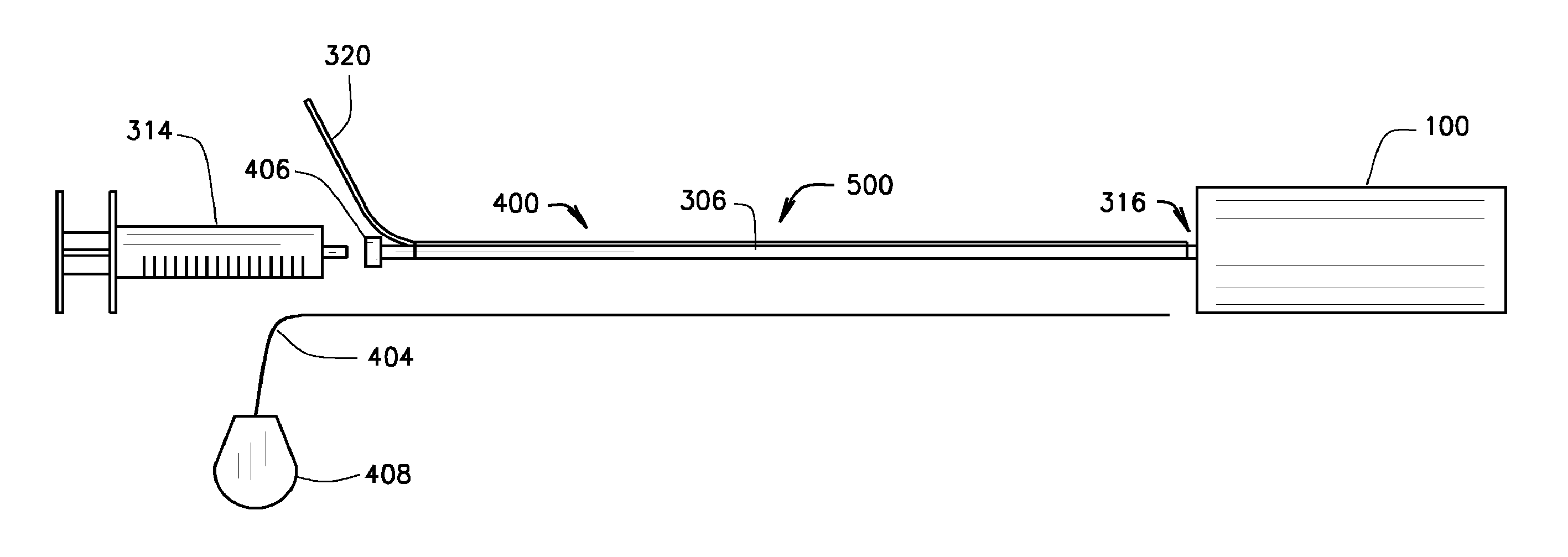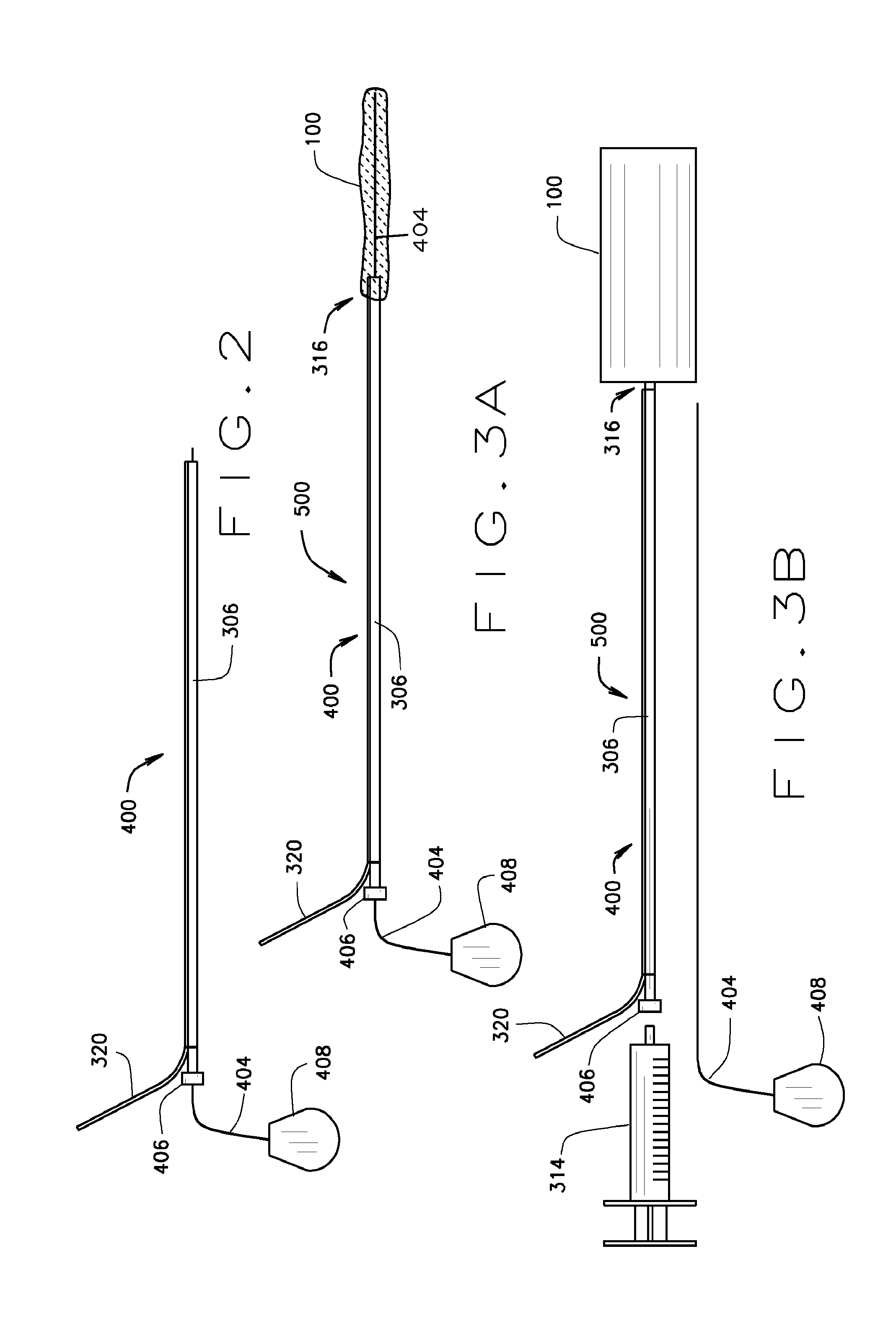Blockstent device and methods of use
a block stent and catheter technology, applied in the field of medical devices, can solve the problems of limiting the fixation of the device, balloon migration and occlusion of non-target vessel segments, higher cost and longer treatment time, etc., to facilitate folding, compression or expansion, the effect of reducing the leakage of fluid
- Summary
- Abstract
- Description
- Claims
- Application Information
AI Technical Summary
Benefits of technology
Problems solved by technology
Method used
Image
Examples
Embodiment Construction
[0064]The present invention relates to a medical device comprising an expandable metal structure known as a “blockstent” and a delivery catheter. The blockstent is a thin-walled stent-like, cylindrical, device that can be expanded into a semi-rigid form that can remain in the body for an extended period. Specifically, the blockstent is configured for use in occluding segments of arteries, veins, and other biological conduits. The delivery catheter is configured to deliver the blockstent to a blood vessel and to provide a pathway, through a cylindrical member or lumen, for fluid to move into the central void of the blockstent, in order to expand it and fill at least a portion of the lumen of the blood vessel.
[0065]A cylindrical embodiment of the blockstent 100 with flat ends is shown in FIG. 1A in an expanded state. This embodiment has an external proximal neck 116 that defines an opening 112 for the passage of fluids, liquids, gases, or solids into the central void of the blockstent...
PUM
| Property | Measurement | Unit |
|---|---|---|
| diameter | aaaaa | aaaaa |
| length | aaaaa | aaaaa |
| thickness | aaaaa | aaaaa |
Abstract
Description
Claims
Application Information
 Login to View More
Login to View More - R&D
- Intellectual Property
- Life Sciences
- Materials
- Tech Scout
- Unparalleled Data Quality
- Higher Quality Content
- 60% Fewer Hallucinations
Browse by: Latest US Patents, China's latest patents, Technical Efficacy Thesaurus, Application Domain, Technology Topic, Popular Technical Reports.
© 2025 PatSnap. All rights reserved.Legal|Privacy policy|Modern Slavery Act Transparency Statement|Sitemap|About US| Contact US: help@patsnap.com



